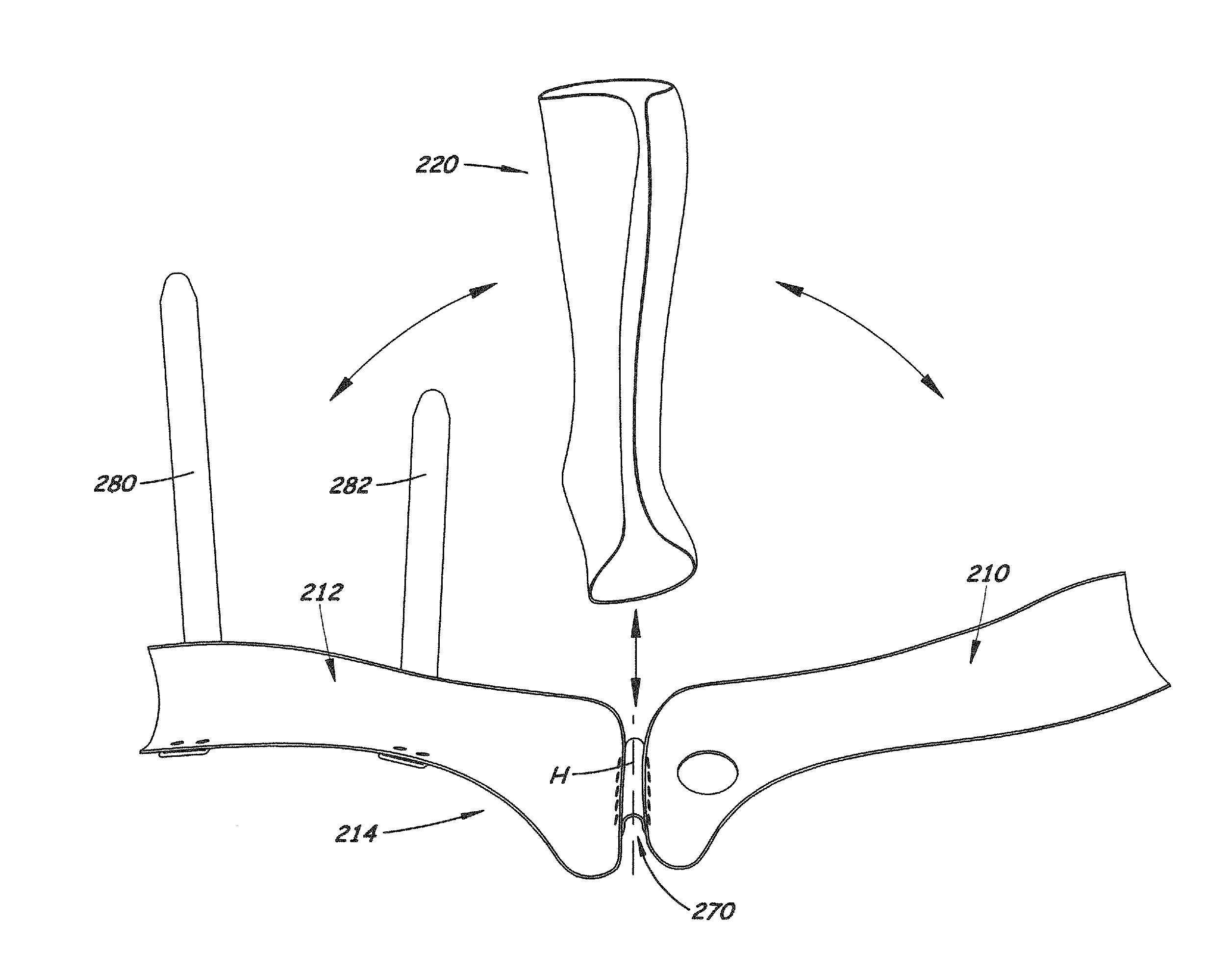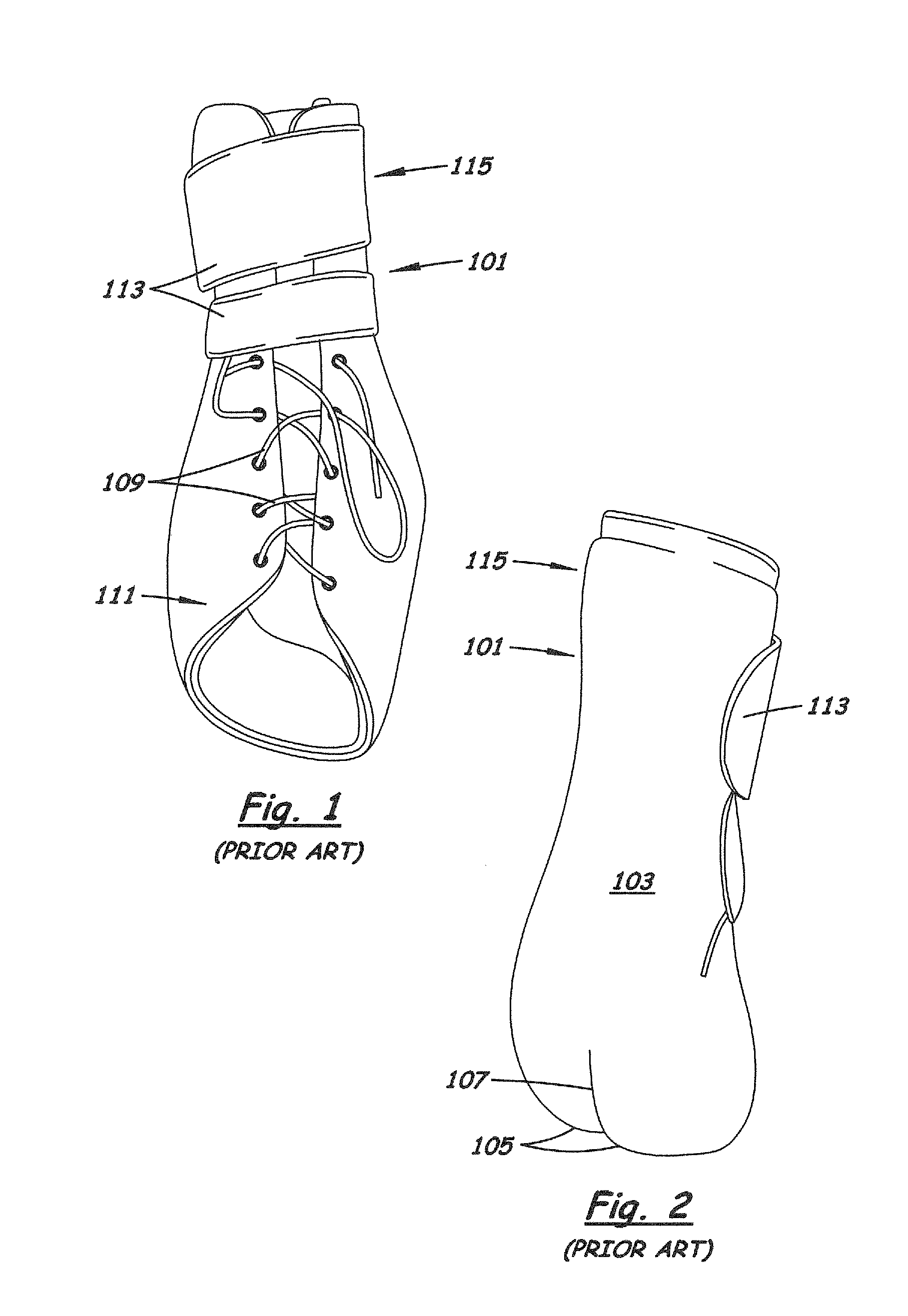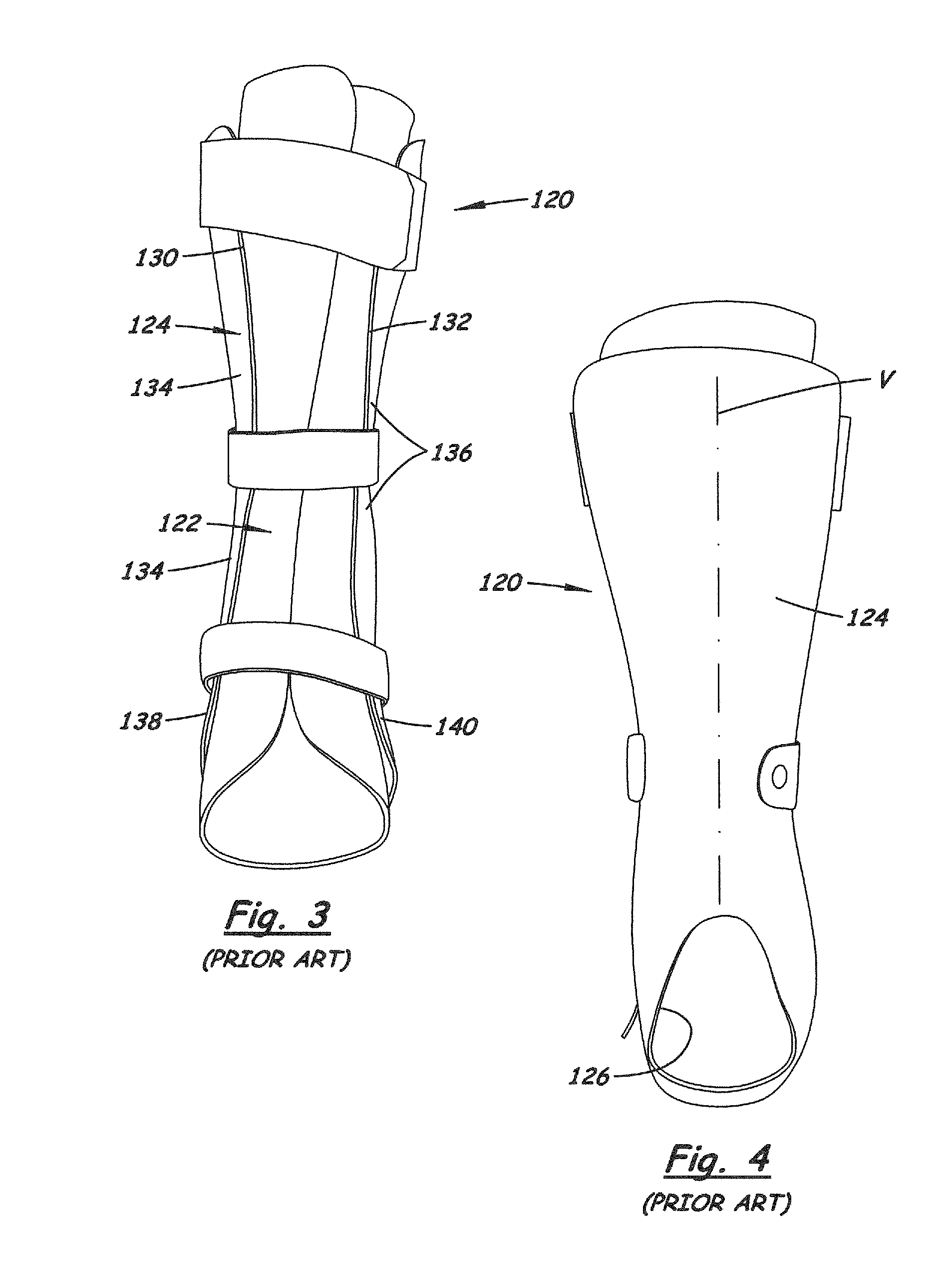Ankle-foot orthotic device
a technology for ankles and feet, applied in the field of lower limb orthotics, can solve the problems of gap/space between the medial and lateral portions all along the posterior and bottom of the device, and achieve the effects of uniform and effective support, increased comfort, and stability of the ankle and/or foo
- Summary
- Abstract
- Description
- Claims
- Application Information
AI Technical Summary
Benefits of technology
Problems solved by technology
Method used
Image
Examples
Embodiment Construction
[0023]Referring to the figures, there are shown several prior art ankle-foot orthotic devices (AFOs), in FIGS. 1-4, and one, but not the only, embodiment of the disclosed ankle-foot orthotic device 10 or “walking orthosis” (FIGS. 5-12).
[0024]FIGS. 1 and 2 are anterior (front) and posterior (rear) views, respectively, of a prior art AFO lace-up boot device 101. Note that the boot body is one-piece, and the rear surface 103 does not comprise any gap / space (FIG. 2) and the bottom surface 105 (bottom of foot region 111) does not comprise any gap / space. This boot body is continuous around the rear of the leg, ankle, and underneath the foot, and only opens at the top and front of the device 101. There may be some indentations / curvature 107 at the rear or bottom, but there are no spaces / gaps in the rear and bottom walls of the boot body. Laces 109 are provided to tighten the foot region 111 of the device. Hook-and-loop-fastener flaps 113 are provided at the ankle and / or lower leg region 11...
PUM
 Login to View More
Login to View More Abstract
Description
Claims
Application Information
 Login to View More
Login to View More - R&D Engineer
- R&D Manager
- IP Professional
- Industry Leading Data Capabilities
- Powerful AI technology
- Patent DNA Extraction
Browse by: Latest US Patents, China's latest patents, Technical Efficacy Thesaurus, Application Domain, Technology Topic, Popular Technical Reports.
© 2024 PatSnap. All rights reserved.Legal|Privacy policy|Modern Slavery Act Transparency Statement|Sitemap|About US| Contact US: help@patsnap.com










